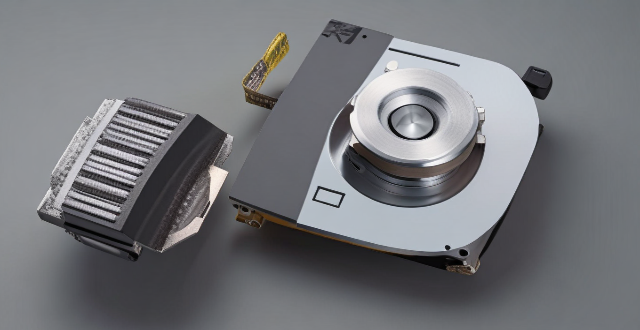Optical drives in computers read and write data from optical discs using a laser beam. The main components include a laser diode, optical system, disc motor, data processing circuitry, and connector. To read data, the laser reflects off the disc surface and is detected by a photodiode, which converts it into an electrical signal for the computer to process. Writing data involves emitting a higher-power laser beam that heats up small areas of the disc surface, causing them to change state and store data.

How does an optical drive work in a computer?
An optical drive, also known as a CD/DVD/Blu-ray drive, is a hardware component that allows a computer to read and write data from optical discs. It works by using a laser beam to read the data stored on the disc and then converting it into digital information that can be processed by the computer.
Components of an Optical Drive
The main components of an optical drive include:
- Laser diode: This is the source of the laser beam that reads the data from the disc.
- Optical system: This includes lenses and mirrors that focus and direct the laser beam onto the disc surface.
- Disc motor: This spins the disc at high speeds so that the laser can read the data from different parts of the disc.
- Data processing circuitry: This converts the analog signal from the laser into digital data that can be understood by the computer.
- Connector: This connects the optical drive to the rest of the computer system.
Reading Data from a Disc
When a disc is inserted into the optical drive, the following steps occur:
1. The disc motor spins the disc at high speeds.
2. The laser diode emits a low-power laser beam that is focused onto the disc surface by the optical system.
3. As the disc spins, the laser beam reflects off the surface of the disc and back through the optical system.
4. The reflected light is detected by a photodiode, which converts it into an electrical signal.
5. The data processing circuitry converts this analog signal into digital data that can be understood by the computer.
6. The computer's operating system then accesses this data and displays it on the screen or performs other actions based on the user's input.
Writing Data to a Disc
Writing data to a disc involves a similar process but with some additional steps:
1. The user selects the files they want to burn to the disc using software on their computer.
2. The software sends a command to the optical drive to begin burning the disc.
3. The laser diode emits a higher-power laser beam that is focused onto the disc surface by the optical system.
4. As the disc spins, the laser beam heats up small areas of the disc surface, causing them to change state and store data.
5. The data processing circuitry monitors this process and ensures that the correct data is being written to the disc.
6. Once the burning process is complete, the disc can be removed from the drive and used in other devices that support optical media.
In conclusion, an optical drive works by using a laser beam to read and write data from optical discs. It consists of several components, including a laser diode, optical system, disc motor, data processing circuitry, and connector. When reading data from a disc, the laser beam reflects off the surface of the disc and is detected by a photodiode, which converts it into an electrical signal that is then processed by the computer's operating system. When writing data to a disc, the laser beam heats up small areas of the disc surface, causing them to change state and store data.